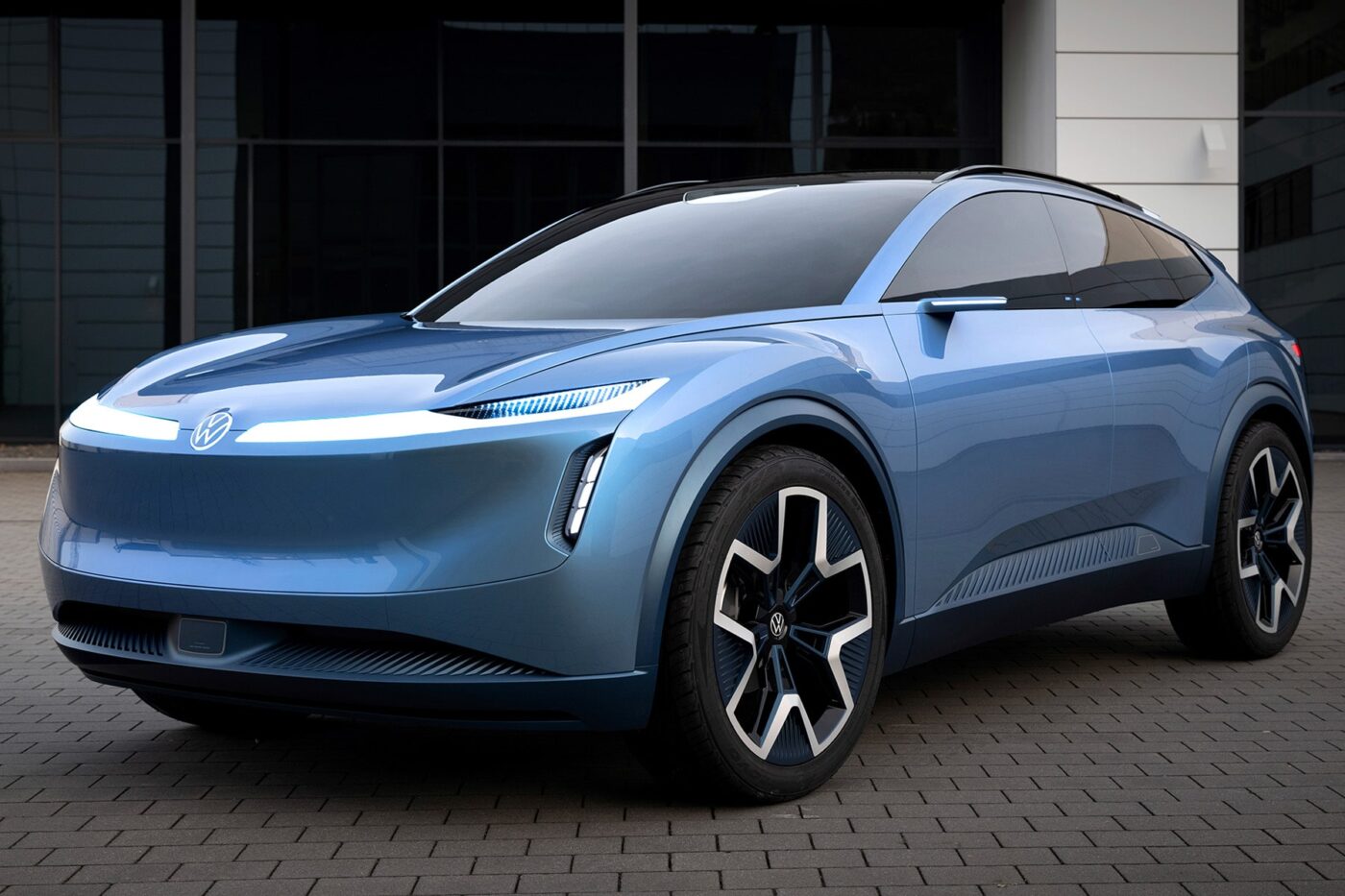VW aims to reach cost parity with Chinese EV manufacturers by 2026
Volkswagen says it plans to achieve cost parity with local BEV competitors for entry-level compact models by 2026. The China Main Platform (CMP) aims to reduce costs by 40 per cent by 2026, in particular through the E/E architecture developed in collaboration with Xpeng and competitive battery technology.
The “In China, for China” strategy is central to the goals. According to this strategy, the vehicles are not only to be built in China, but also developed in China using local technologies to meet customer requirements – hence, for example, the aforementioned partnership with Xpeng. On the eve of the trade fair in Beijing, VW hinted at exactly what this will look like: the electric sub-brand ID. UX electric sub-brand is to be established for China, which is intended to appeal to a younger target group. VW provided a glimpse of the design style of the upcoming vehicles with the ID. Code concept car.
“The course is set, and we want to benefit more from the market’s growth momentum from 2026,” VW Group CEO Oliver Blume is quoted as saying in the press release for the Capital Markets Day. “The focus will be on the consistent implementation of the strategy, further strengthening our customer orientation and an accelerated model development. Together with our partners, we are also increasing our technological competitiveness and significantly reducing costs.”
VW is also planning its own ‘China Electrical Architecture’
There is a simple reason why VW is focussing on entry-level models in the compact class: the segment is expected to account for more than 50 percent of the overall market in the future.
In order to bring compact models based on the CMP to market more quickly, VW is relying on the newly founded Volkswagen Group China Technology Company (VCTC), the Group’s own research and development centre in Hefei. In addition to the CMP and the E/E architecture developed jointly with Xpeng, a ‘China Electrical Architecture’ (CEA) is also to be brought to series maturity there. VW hopes that this standardisation of the digital architecture will not only “significantly” accelerate the pace of development, but also increase cost efficiency.
As a joint development centre for all Group brands and joint ventures, the VCTC is intended to reduce the number of interfaces between the various divisions. “Coordination takes place in the same time zone and with the sole focus on the local market. In addition, the Tech Company brings together vehicle and component development as well as procurement right from the start of the development process. Simultaneous work saves additional time and enables an optimised cost structure,” VW wrote, describing the expected efficiency gains. By focussing on local solutions at vehicle, platform, module and system level, it should not only be possible to purchase “off-the-shelf modules” from local suppliers, but also – if desired – modules from the Volkswagen Group’s global technology toolbox.
“With this increased efficiency and speed, significant economies of scale and
strong cost position, Volkswagen continues to be profitable and cash-generative, even in a challenging market,” says Blume. “At the same time, we are ensuring our ability to finance investments in the future while securing a robust financial position.”
Not only the core brand, but also Audi has recently struggled to benefit from the growth momentum in China’s electric car market – although the Ingolstadt-based company has already launched China-specific models such as the Q5 e-tron. In a separate strategy update, Audi CEO Gernot Döllner emphasises that Audi’s product range is “strong”. “With a strong product line-up, a clear plan for localization and regionalization, and our partners FAW and SAIC, we have all it takes to remain a strong player in the Chinese market,” said Döllner.
Audi aims for a multi-track approach in China
On the eve of the motor show, Audi presented the Q6L e-tron, its first electric car based on the new PPE platform for China. The long-wheelbase version of the Q6 e-tron presented in March has a slightly longer wheelbase and an even larger battery. This car is being built by the Audi FAW NEV Company, an electric car joint venture with FAW founded specifically for the PPE. The Q6L e-tron and other PPE models (such as the A6 e-tron) are built at the joint venture’s factory in Changchun.
While the Chinese versions of the PPE models are built jointly with FAW, Audi also entered into a partnership with SAIC last year to develop its own vehicles for China. “Together with our partner SAIC, we plan to develop intelligent connected BEV models to further strengthen our position in the Chinese market,” says Döllner – without going into detail about the models and technologies.
To this end, Audi announced a charging infrastructure cooperation with Porsche in Beijing. Customers of both brands will have access to over 900 high-performance charging points in 50 Chinese cities. These are to be installed at shopping centres, hotels or office buildings in central business districts, for example. “We will expand our existing charging offer in China by joining forces with Porsche,” said the Audi CEO. “The goal of this new collaboration is to provide customers in the country with an even more premium, convenient, and efficient e-mobility experience.”





0 Comments